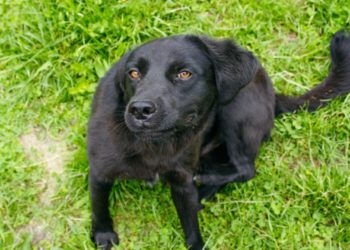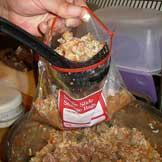
I don’t like fat cats. I have nothing against them personally, but when I see one in practice I can’t stop myself from thinking about the myriad ways those extra pounds will likely shorten their lives and/or diminish their enjoyment of what time they do have left. Perhaps a more nuanced way to rephrase my initial comment is, “I don’t like what fat does to cats.”
Obesity is linked to a higher incidence and/or increased severity of osteoarthritis, hepatic lipidosis (a potentially fatal type of liver disease), diabetes mellitus, and some types of cancer. Looking at the big picture, research has shown that lean animals live longer and healthier lives than do those who are overweight. Since owners have more or less complete control over what and how much house cats eat, the question becomes, why are we feeding them to death?
I think the answer lies in two aspects of modern pet ownership:
1. We love our cats, and one way to show that love is through food.
2. We are busy and/or lazy and showing love through food is fast and easy.
Cat treats enable this dubious behavior. Take a look at this quote that I took directly from one company’s website:
Our treats are about two calories each, and we recommend feeding up to 15 treats per 10 pounds of your cat’s body weight.
Let’s do some math surrounding the caloric needs of a hypothetical, overweight 10-pound cat who should really tip the scales at around 8 pounds.
2 x 15 = 30 calories from treats a day
That doesn’t sound like much until you realize that an overweight 10-pound cat should only be taking in a total of somewhere between 139 and 209 calories per day.
30/139 x 100 = 22%
30/209 x 100 = 14%
If an owner follows the manufacturer’s recommendation, he or she is feeding their cat between 14% and 22% of their cat’s total daily caloric intake in the form of treats. Yikes!
And most treats are not nutritionally balanced or made from high quality ingredients. Take a look at this ingredient list for a popular brand:
Chicken By-Product Meal, Ground Corn, Animal Fat (preserved with Mixed Tocopherols), Rice, Dried Meat by-Products, Wheat Flour, Natural Flavors, Corn Gluten Meal, Potassium Chloride, Choline Chloride, Salt, Turkey Meal (preserved with BHA/BHT), Calcium Carbonate, DL-Methionine, Taurine, Vitamins (dl-Alpha Tocopherol Acetate [Source of Vitamin E], Vitamin A Acetate, Niacin Supplement, Vitamin B12 Supplement, Riboflavin Supplement, Thiamine Mononitrate, d-Calcium Pantothenate, Vitamin D3 Supplement, Biotin Supplement, Pyridoxine Hydrochloride [Vitamin B6], Folic Acid Supplement), Minerals (Zinc Sulfate, Copper Sulfate, Manganese Sulfate, Potassium Iodide), Iron Oxide
So if your cat is overweight, the first thing to do is toss out the treats. Use the time and money you’ll save to pamper your pet in other ways, like more play time, and feeding several meals throughout the day of a high quality, canned food designed for overweight cats (canned is best when it comes to weight loss).
Simple changes like these just might save your cat’s life

Dr. Jennifer Coates
Image: Steve Mann / Shutterstock








